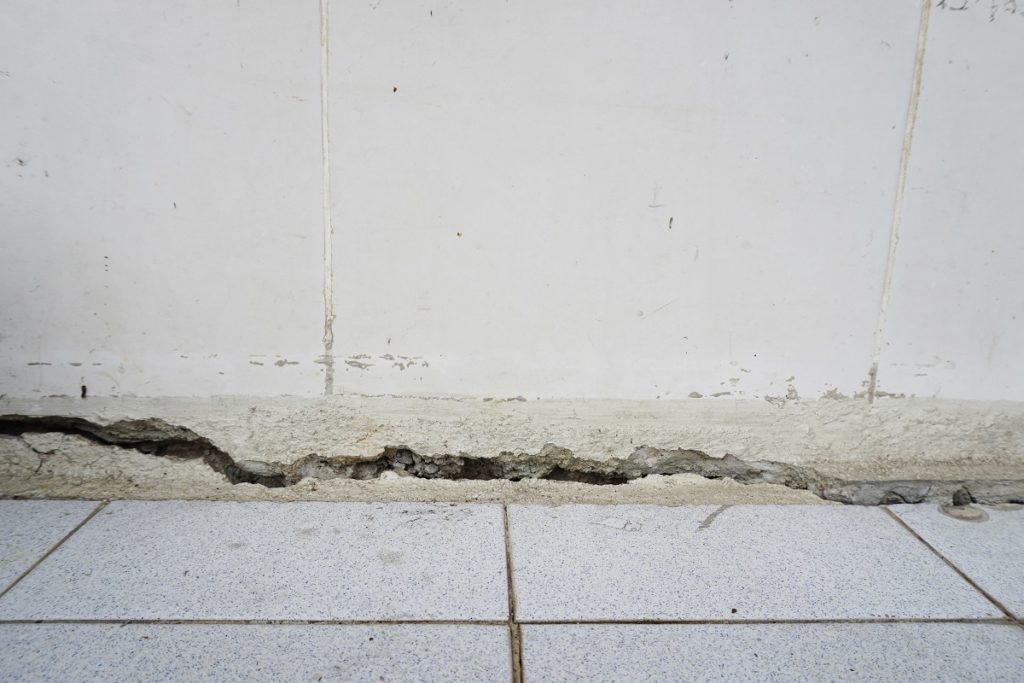Finding a crack in your foundation can be quite an unsettling matter as it could indicate more serious damage to the foundation of your home. This is one problem you should not ignore because your foundation holds up your home. You should have it checked to know if an immediate house foundation crack repair is needed. The sooner you identify the problems and have them fixed, the less expensive it will be to repair them.
Types of Foundation Cracks and When to Worry
Your foundation is very important to the overall structure of your home, and discovering a crack in it can be scary. However, not all foundation cracks are the same; there are several types and each one can tell you about the extent of the damage. To help you understand more about foundation damage, here are some of the most common types of foundation cracks:
Vertical Cracks
Vertical cracks that go straight up and down or a slight diagonal are the most common and least worrisome type of foundation crack that you will encounter. These types of cracks usually occur due to foundation settling, so they’re not unheard of even for newly built homes. Vertical cracks are also among the easiest and least expensive types of cracks to fix and seal.
Diagonal Cracks
As the name implies, these appear at a 30- to 75-degree angle in foundations or basement walls. A diagonal crack is another common type of foundation crack that may appear as a thin hairline crack, with one end wider than the other. Diagonal cracks are common in a house built on hills or uneven ground because of the differential settling of foundations, where one side of the house’s foundation settles lower than the rest. This type of crack is more expensive to fix than a vertical crack because you also need to address the root cause of the differential settlement after sealing the crack.
Horizontal Cracks
These are considered to be the most serious type of crack. If you discover this type of crack in your home, do not waste time in having them repaired as they often indicate that there might be serious damage to the foundation and overall structural integrity of your home. Horizontal cracks are common in houses with brick or concrete block foundations.
Indoor Warnings Signs to Look Out For
 A little unevenness in your home’s foundation is usually not a cause for panic. It’s normal for houses to settle over time. However, there are several warning signs that more dramatic changes are happening. You need to be aware of these signs:
A little unevenness in your home’s foundation is usually not a cause for panic. It’s normal for houses to settle over time. However, there are several warning signs that more dramatic changes are happening. You need to be aware of these signs:
- Doors that are beginning to fail to latch or windows that won’t completely close
- Cracks appearing in ceramic or vinyl tile over concrete floors
- Crack in walls, especially in the windows and doorways
Some common causes of foundation cracking are often linked to soil quality and moisture. Soil settling can occur if loose fill dirt is used for the building site or if footers are poorly tamped. Your home builder might be the one to blame for this. Aside from soil settling, the moisture level in your soil could also cause foundation cracking, as soil expands when wet and shrinks when dry. It’s best to leave the foundation repair to the experts, especially if you’re not an expert when it comes to engineering and foundation repair.

